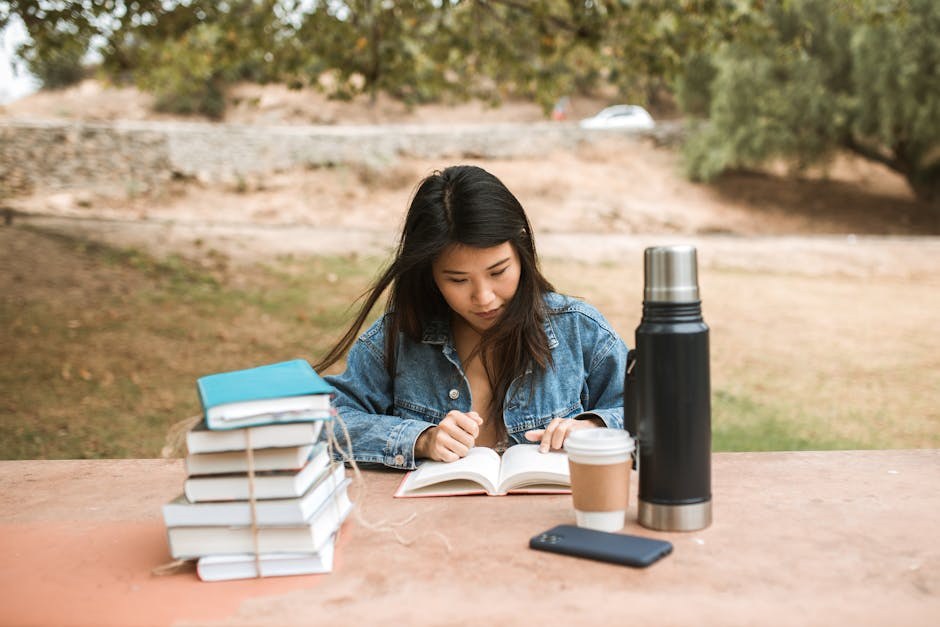There is a reason this angle has become a bedroom classic – the reverse cowgirl gives partners a fresh view, places control in the rider’s hands, and creates a palette of sensations you can fine-tune to your body. If you’ve seen it hyped and weren’t sure how to make it feel as good as it looks, consider this your gentle, practical walkthrough. We’ll reframe the essentials, show you how to get into position without strain, and share body-smart ways to keep pleasure high and effort low. Along the way, you’ll learn how to steer rhythm, depth, and angles so the reverse cowgirl becomes a reliable go-to rather than a once-in-a-blue-moon experiment.
What the Position Actually Is
In its simplest form, reverse cowgirl means the receiving partner straddles a lying partner while facing away – hips aligned, bodies stacked, and movement controlled from the top. Think of it as the familiar “on top” setup with a playful 180-degree twist. Because the rider’s torso, hips, and spine are free to adjust, the position offers wide variation: upright and poised, tipped forward with hands on the mattress, leaning back with a supported arch, or even seated while the partner props up slightly on pillows. Each variation changes pressure points and the path of thrust – a key reason the reverse cowgirl can be endlessly customized.
Language evolves, and many couples use different names to keep things inclusive. Whatever you call it, the mechanics remain the same: the rider faces the partner’s legs, not their face, and sets the pace. That single shift opens up distinct visual and tactile rewards.

Why So Many People Love It
The appeal of reverse cowgirl comes from a combination of control, spectacle, and access. The rider shapes the arc of movement and chooses how shallow or deep each stroke goes. The partner on the bottom enjoys an uninterrupted view – hips, back, and the rolling motion of the rider – while still having their hands free. Because everyone can touch, steady, or stimulate as desired, the position can be both intensely erotic and surprisingly intimate, especially when you sync breathing or add gentle guidance at the hips.
Setting Up Without Awkwardness
Start supported. Ask the partner on the bottom to lie on their back with a pillow beneath the upper back or hips if that feels good. A stable base steadies thrust and keeps alignment comfortable for both of you.
Mount with intention. Straddle the hips, guide penetration with one hand, and face the feet. Keep your knees wide enough for balance – wider knees generally means less quad burn, which helps the reverse cowgirl feel smooth rather than effortful.

Find your first gear. Before any big movement, settle your weight into your sit bones and take two slow breaths. Micro-motions – gentle pulses, small circles, or shallow glides – tell you instantly which direction delivers comfort and pleasure.
Pros That Keep You Coming Back
Top-side control – You manage tempo, depth, and angle. That autonomy often means you can ride the exact path that lights you up, and you can pause without breaking the mood.
Irresistible view – The partner on the bottom sees the arch of your back, the sway of your hips, and every curve. Visual excitement feeds arousal, and the reverse cowgirl supplies it in spades.

Hands available – Both of you can touch freely. The bottom partner can explore hips or external stimulation; the rider can anchor on thighs, press into the mattress, or add focused touch without twisting.
Seamless transitions – From here, it’s simple to sit up together, shift to a seated straddle, or roll into a different angle. That fluidity keeps momentum going.
Common Challenges (and How to Solve Them)
“This feels like squats.” Riding straight up and down taxes your quads. Swap vertical bouncing for gliding patterns – circles, figure-eights, or forward-back slides. These recruit hips and core instead of only legs, making the reverse cowgirl more sustainable.
“The angle is sharp.” Everyone’s anatomy differs. If the sensation is pokey or intense, shorten the stroke and tilt your pelvis. A subtle anterior tilt often softens impact; a small posterior tilt can increase pressure where you want it. Pillows beneath the bottom partner’s hips can fine-tune the entry angle instantly.
“We lost alignment.” When movement gets enthusiastic, slips can happen. Keep strokes shallow during quick tempos. If you change angle, slow down and guide re-entry with your hand to keep things smooth and safe.
“I’m self-conscious facing away.” Turn the moment into play. Use a mirror, hold hands behind you, or invite light guidance at your hips. Confidence grows when you feel supported and in charge – core ingredients of the reverse cowgirl.
Movement Patterns That Feel Amazing
Different motions create different sensations. Think beyond the stereotypical bounce and treat your hips like a joystick. Try these patterns and note what your body prefers – then build a rhythm around that preference.
Shallow pulses – Short, controlled strokes near the entrance keep you connected and reduce effort. They’re excellent for maintaining arousal without tiring out.
Depth on demand – If a shorter partner or a particular angle needs more contact, slow down and sink gradually until the pressure hits “just right.” A steady descent lets you stop exactly where comfort peaks.
Circles and eights – Hover a half-inch high and draw circles with your hips. The internal pressure changes around the clock face, adding variety without heavy lifting – a hallmark of pleasurable reverse cowgirl technique.
Forward-back slides – Glide your pelvis forward and then back along your partner’s body. The friction feels different from vertical motion and often pairs beautifully with external stimulation.
Supported lean – Tip forward, plant your hands near the partner’s thighs, and angle your pelvis until motion feels smooth. This posture shifts effort into arms and core, extending your stamina.
Lean-back arc – Rest your hands behind you on the mattress and lift your chest. This expands your front line and can create an intense, full feeling. Keep strokes shorter here to stay comfortable.
Comfort First: Lubrication, Breath, and Pace
Comfort is non-negotiable. Generous lubrication reduces friction and lets you focus on sensation rather than resistance. Slow inhalations calm your nervous system and help you notice the exact micro-adjustment that turns good into great. A patient start saves energy for the thrilling middle – and helps the reverse cowgirl feel like a ride you can actually enjoy, not endure.
Safety Notes You’ll Be Glad You Knew
Guide every re-entry – If you lift high or change angle, use your hand to realign before descending. That tiny habit prevents uncomfortable bumps and keeps the mood intact.
Prefer shallow when fast – Quick rhythms pair best with short strokes. Reserve deeper movement for slower tempos with full attention on alignment.
Signal and steady – The bottom partner can press gently at your hips to steady a rhythm, but avoid lifting you against your motion. Think “follow and support,” not “hoist.” Clear signals make the reverse cowgirl smoother for both of you.
Training Wheels: Build Confidence Before You Ride Hard
Practice the mechanics without pressure. Sit astride a firm pillow to explore hip paths – circles, eights, tilts – while noticing which patterns require the least leg effort. Transition that ease into the bedroom: begin with micro-circles, then blend in a forward-back glide, and only then add lift. Because you’re orchestrating the progression, you’ll feel in control – the essence of a satisfying reverse cowgirl.
Breath-Led Arousal
Syncing breath with movement heightens sensation and focus. Try a slow inhale as you rise and a relaxed exhale as you descend or glide forward. The breath cues your pelvic floor to release and engage in harmony with motion, making the position feel fluid. When in doubt, smaller strokes plus deeper breathing equals steadier pleasure.
Hands, Toys, and Touch
External stimulation – Because your chest and belly are free, you can touch as needed or invite your partner’s hand from below. The angle of reverse cowgirl keeps everything accessible.
Anchors for stability – Rest hands on thighs, mattress, or a sturdy headboard to distribute effort away from legs. Small anchors translate into longer, smoother sessions.
Enhancers – If you choose to add a toy, keep strokes shallow and rhythmic. Contain movement to avoid jostling; let intensity come from consistency, not force.
Variations to Keep Things Fresh
Seated partner – Have the receiving partner sit up against pillows or a headboard while you remain facing away. You get the theater of eye-contact via a mirror or side glance, and the bottom partner can kiss shoulders or wrap arms around your waist.
Chair or edge – Straddling at the edge of a firm chair adds stability and makes hip circles effortless. Keep feet planted for excellent leverage – a simple way to make reverse cowgirl silky and sustained.
Mirror play – Position a mirror near the bed so you can enjoy the visuals without turning. Seeing the rhythm you’re creating can be exhilarating and boosts confidence.
Pillow lift – Slip a pillow beneath the bottom partner’s hips to change the angle. This small lift can transform pressure points, proving how adjustable the reverse cowgirl can be.
Pairing and Transitions
Rhythm loves contrast. Alternate a stretch of gliding reverse cowgirl with a brief shift to a familiar angle, then return for the finale. Because your body knows the route back, you keep arousal high without taxing one set of muscles. Transitions feel best when you communicate – a squeeze at the hips, a nod, or a whispered check-in keeps you moving together.
Troubleshooting: Quick Fixes
Too intense too soon – Scale back range of motion. Think “half-strokes and circles,” then slowly lengthen once your body settles.
Leg fatigue – Narrow the vertical bounce and widen your knees. Shift to a supported lean or plant your hands to recruit upper body strength.
Off-track sensation – Tilt your pelvis a few degrees. A micro-tilt can turn blunt pressure into pleasant fullness during reverse cowgirl.
Feeling disconnected – Add a metronome cue: count a gentle “one-two” in your head or match strokes to shared breathing. Consistent rhythm invites arousal back in.
Confidence, Body Image, and Control
Facing away can feel thrilling precisely because it removes self-monitoring and replaces it with embodied control. Choose lighting that flatters, music that relaxes, and a pace that makes you feel grounded. The more you feel in command of angle and tempo, the more the reverse cowgirl reads as confidence rather than performance. Invite affirmations from your partner – a hand squeeze, a murmur of appreciation, gentle guidance at your hips – so your brain associates the position with safety and pleasure.
Guided Sequence to Try Tonight
Begin with generous touch and warm-up. Lubrication, lingering kisses, and slow breathing set the stage.
Mount carefully, knees wide. Settle your weight, make two small circles, and pick the direction that feels most effortless.
Build a pattern: eight shallow pulses, two slow sinks, then a glide forward-back. Repeat that set twice to establish flow.
Layer external stimulation if desired, keeping motion consistent so arousal can accumulate.
For a crescendo, shorten range and quicken just a touch – shallow, controlled strokes – then slow again for depth when you want intensity.
If you change angles, re-align by hand and keep communication open. When you’re ready to switch or finish, transition to a supported lean or a seated variation without losing contact.
Etiquette for a Smoother Ride
Ask and attune – A simple “like this?” keeps you aligned physically and emotionally. Reverse cowgirl thrives on real-time feedback.
Steady, not showy – Small, repeatable motions feel better than big, dramatic moves. Let pleasure, not spectacle, guide the pace.
Reset when needed – If you lose rhythm, pause, breathe, and resume with micro-circles. A calm reset is part of the dance.
Why This Position Can Become Your Signature Move
Mastery comes from listening to your body and using the freedom this angle grants. You can be playful and relaxed, or intense and focused – it’s your call. Because it’s endlessly modifiable, the reverse cowgirl translates across moods, energy levels, and body types. With practice, you’ll learn which tilt spots the sweet zone effortlessly, which strokes conserve energy, and which variations you prefer for a slow burn versus a fast finish.
Make the Most of the View
Visual excitement is part of the magic here. If you enjoy being admired, let yourself be seen – perhaps with a gentle lean that highlights the curve of your back. If you prefer a cocoon, dim the lights and focus on sensation. Reverse cowgirl is flexible enough to honor both styles: it can be smoldering theater or an internal, body-led meditation.
A Final Nudge to Experiment
When you strip away expectations and move with curiosity, you’ll notice how small shifts – a different pillow height, a few degrees of tilt, a slower breath – transform the ride. Build your session like a song: intro with glides, verse with circles, chorus with shallow pulses, bridge with a leaned-back arc, then return to the rhythm that carried you. The position rewards attention over force, presence over performance.
Putting It All Together
Think of tonight as your rehearsal for a signature move. Keep strokes gentle at first; let your hips sketch circles until you feel that unmistakable “yes.” Use your hand to guide alignment whenever you change depth. Widen your knees to relieve your quads, lean forward when you want stability, lean back when you crave fullness. Invite touch where it enhances, and signal when you need steadiness. Most of all, trust your sense of what feels good – that is the compass of the reverse cowgirl, and it never steers you wrong.